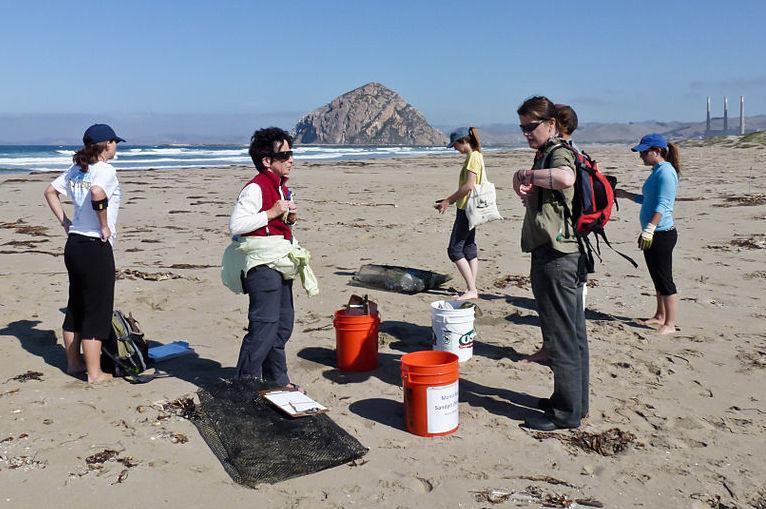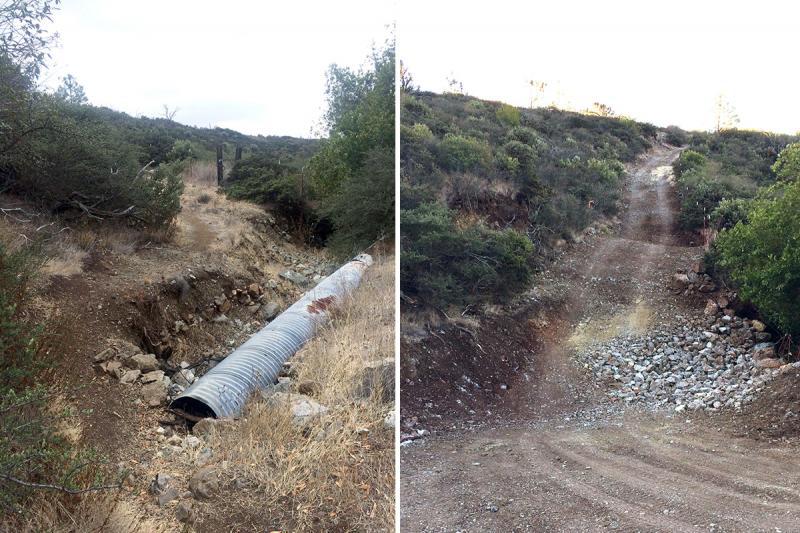
Assessing Climate Risks in a National Estuary
The Morro Bay Estuary
Along California’s central coast, approximately halfway between Los Angeles and San Francisco, a distinctive volcanic rock marks the entrance to Morro Bay. In the estuary on the northern side of the bay, marine species and birds rely on the protected waters for food, breeding grounds, and migration stopovers.
The range of wetlands, intertidal mudflats, salt and freshwater marshes, eelgrass beds, and other subtidal habitats found in estuaries make them some of the most productive natural habitats in the world, and Morro Bay is no exception. Some of the fish Morro Bay’s local fishermen catch offshore spend part of their life in the estuary, and the bay’s waters support two commercial oyster farms. The estuary is also an important stopover for migratory birds on the Pacific Flyway, a flight path from the Arctic to South America. In addition to its ecological and economic value, the estuary plays a central role in the community’s recreational activities. Tourists and locals enjoy boating, biking, paddling, diving, and hiking in the Morro Bay estuary and surrounding region.
Morro Bay National Estuary Program
The ecological significance of estuaries, and the necessity to protect them, led Congress to create the U.S. Environmental Protection Agency’s (EPA) National Estuary Program (NEP) as an amendment to the Clean Water Act. The NEP is a network of 28 community-based programs. Each individual program supports local solutions to local conservation issues, with financial support and technical assistance from the EPA.
In 1995, after an extensive local effort to protect and restore Morro Bay for people and wildlife, Congress designated it as an "estuary of national significance." The Morro Bay National Estuary Program—a local non-profit organization—manages the estuary with input from a diverse range of stakeholders, and offers a range of recreational and volunteer opportunities that enable residents to particpate in preserving their local resource.
For example, the Morro Bay NEP hosts "Coastal Cleanup Days" and photo contests, and posts blogs to its website to keep people informed about field work in the bay. The structure of the National Estuary Program enables an efficient partnership between local leaders and federal advisors. Jamie Irons, the Mayor of the City of Morro Bay, acknowledges the program’s benefits, “They provide the education to all of us, and with that education it enhances our responsibility and knowledge on how we need to care for the Bay.”
Climate threats
Warmer air and water temperatures, drier conditions, more intense storms, and sea level rise are all causes for concern in the Morro Bay estuary.
Recognizing that these climate impacts could pose significant risks to the estuary’s protective habitat and clean waters, a group of Morro Bay NEP stakeholders began working with the EPA’s Climate Ready Estuaries program to assess their vulnerabilities.
The group used the Climate Ready Estuaries' Being Prepared for Climate Change workbook to develop a Climate Vulnerability Assessment. The process included examination and interpretation of projections from global climate models, historic data, and local expertise to analyze the likelihood and severity of climate change impacts, and what those mean for the Morro Bay National Estuary Program’s goals.
Assessing risks
The final assessment concluded that Morro Bay is at risk from 54 climate change-related impacts. Half of the potential impacts (27) were listed as high priority: each of these risks has a high likelihood of occurrence coupled with a high consequence of impact. Another 27 of the impacts were classified as medium or low priorities.
The high-priority risks affecting Morro Bay are expected to be a direct result of warmer temperatures, increasing storminess, increasing drought, and sea level rise. For example, warmer air temperatures may alter water temperature in the bay and stream, leading to poor habitat conditions. Increasing storminess across the bay’s watershed can lead to higher levels of pollutant influx and sedimentation in the estuary. Drier conditions could impact both the estuary and the community as further stress is placed on native plants and steelhead trout, and freshwater supplies in the area decrease. As sea levels rise, habitat that is usually safe from flooding could be at risk, and salt water could infiltrate ground water.
Now that the Morro Bay National Estuary Program has completed a Climate Vulnerability Assessment, the program can prioritize existing action plans or develop new ones to slow or mitigate these impacts and improve climate resiliency.
Taking action
As a result of the Climate Vulnerability Assessment, the group identified 22 potential adaptation actions and selected 15 to execute—a few of these are already underway.
Examples of adaptation actions the Morro Bay NEP group plans to implement include floodplain restoration, protection of native species, and conservation-focused education for the public and landowners.
Morro Bay NEP expects to flesh out their action plan with additional details in the near future. As they continue taking steps to protect the estuary, the group will review their Climate Vulnerability Assessment every five years.


